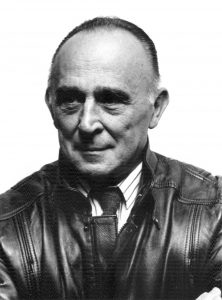Pieter Ringoot

Pieter Ringoot (Born in 1921 in Lebbeke, Died in Dendermonde in 2011 – Belgium) Lived and worked in Lebbeke. Married to Maria Verdoodt (1922 – 2005)
In the very diverse variety of Pieter Ringoot’s work, one finds the homogeneity of an artistic formation and the utmost care in the execution and preparation of each work. During his life, Pieter Ringoot rarely revealed his work because he believed that he could only go public with work that met his very personal artistic requirements. As a result, the work is characterized by careful preparation, an almost traditional execution and has been subject to a very critical approach.
Pieter Ringoot is what is called an “academic painter”. He is not one to improvise He does not stand in front of his canvas to paint; just like that. When he starts painting, that is prepared, then he knows what he is going to paint and how he is going to paint it, then he has made the necessary preliminary studies of his subject. He knows his job through and through. With him, a work is not a coincidence, but one could almost say the birth of a full-term pregnancy. He is someone who did not make things simple and easy and was very rarely, not to say, never, satisfied with his work. He dared to undo the work of hours, sometimes of days.
When one looks at the work, it becomes abundantly clear that the subject is of paramount importance to him. For him, the colors served the subject and not the other way around.
The precise approach and design of his subjects fully reveals the academic design of this artist. In 1941-42 he simultaneously attended the academy in Aalst and Dendermonde, where he had Piet Gillis (laken 1887 – Dendermonde 1965) as a teacher. From 1947 to 1949 he took lessons at the St. Lukas in Brussels and from 1949 to 1962 at the school for arts and crafts in Anderlecht. When we know that his last teacher was Emile Salkin, a personal friend and kindred spirit of Paul Delvaux, we also understand why the composition in Pieter Ringoot’s work is so striking.
- Text taken from the introduction to the exhibition in April 1976 by Achiel Vermeiren, then chairman of the art circle “als ich can” in Lebbeke.
Hans Sturris


Hans Sturris was born on April 21, 1939 in Dinteloord. (Brabant – Netherlands) and is an artist, illustrator, graphic artist and writer.
Hans lived in Dinteloord in Brabant until he was twenty. He studied at the Sint Joost Art Academy in Breda. After his military service he moved to Amsterdam. Because he wanted to see a piece of the world, he became a ship’s clerk at the KNSM in 1962 and sailed to North and South America a number of times. After sailing for a year and a half, he settled in Amsterdam as a freelance graphic designer and illustrator.
He was best known for his book illustrations and designs for greeting cards. In 1966 he also made a textless comic strip called ‘Baron Bonhome’ for the Algemeen Dagblad.

He also wrote the popular children’s book ‘The Riddle of the Nebula Lake’. He did this under the pseudonym “John Schot”. He made the illustrations and the design for the cover in his own name.
Other well-known works are the book covers for the white Puk and Muk booklets commissioned by Zwijsen Publishers.
Today, Hans is mainly active as a painter. This from his studio in Lelystad



